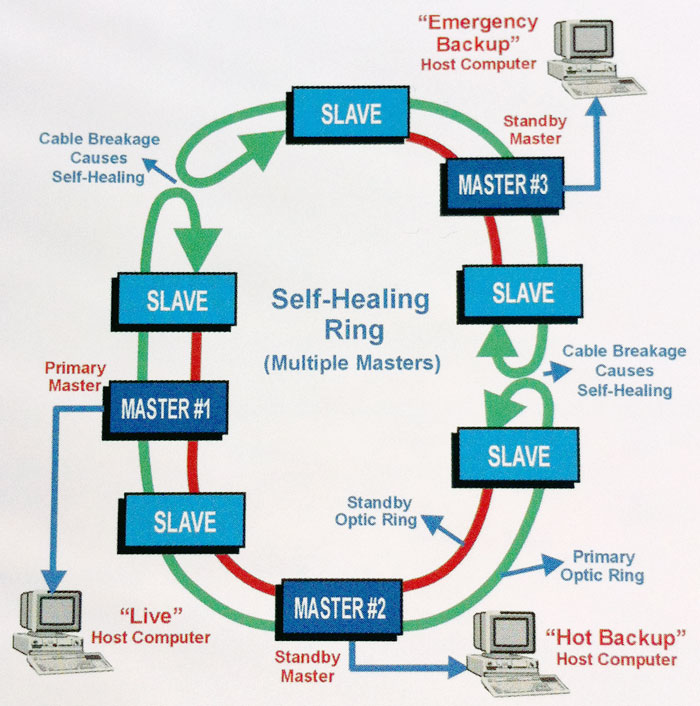Improve Your Security With Advanced Fiber Optic Security Solutions
In an age where safety is vital, innovative fiber optic safety and security systems provide a compelling solution for boosting safety and security throughout numerous settings. What implications do these developments hold for future safety and security steps?
Advantages of Fiber Optic Protection
Harnessing the benefits of fiber optic modern technology dramatically boosts protection systems across numerous applications. Among the main benefits is the raised bandwidth capacity, permitting for the transmission of huge quantities of data at broadband. This is specifically crucial for real-time video clip monitoring, where high-resolution feeds can be sent without latency, ensuring prompt feedback abilities.
Furthermore, fiber optics show remarkable resistance to electromagnetic disturbance, which is crucial in environments with possible signal interruptions. This reliability ensures constant performance in essential safety operations. In addition, fiber optic cords are less vulnerable to tapping and unapproved gain access to compared to standard copper wiring, consequently enhancing data stability and discretion.
One more notable benefit is the toughness of fiber optic systems; they are more resistant to ecological elements such as dampness, temperature variations, and harsh substances. This resilience converts to decrease upkeep costs and longer life expectancies for safety and security installments.
Lastly, the lightweight nature of fiber optic wires promotes easier setup and directing, especially in intricate frameworks (fiber optic security system). Inevitably, the combination of fiber optic modern technology right into security systems not just reinforces defense measures however also enhances operational effectiveness
Trick Features to Consider
When reviewing fiber optic protection systems, numerous key features need to be considered to guarantee optimal efficiency and efficiency. First, evaluate the system's detection variety and level of sensitivity; a comprehensive range permits for keeping an eye on big areas, while high sensitivity makes certain that even minor disruptions are detected immediately.
Following, think about the combination abilities of the system. A fiber optic protection system must perfectly user interface with existing protection procedures such as video cameras and alarm systems, creating a natural security network.
Durability and ecological resistance are additionally critical functions. Guarantee that the system is designed to withstand rough weather and possible physical dangers, as this will lengthen its operational life-span.

Lastly, consider the scalability of the system. A durable fiber optic safety system ought to be easily expandable to suit future requirements without substantial overhauls. By thoroughly considering these functions, you can select a fiber optic safety and security option that enhances security and safety and security in your atmosphere.
Installation Refine Overview
To effectively implement a fiber optic protection system, an organized installation process is essential. This procedure starts with a comprehensive site analysis to establish the particular protection requirements and to recognize optimal places for fiber optic cables and safety and security tools. Following this assessment, the setup group will certainly develop an in-depth strategy, including cable television paths, required equipment, and conformity with local policies.
Following, the installment entails laying the fiber optic cable televisions, guaranteeing they are secured from environmental aspects and physical damages. Correct handling techniques are crucial, as fiber optic cords are delicate and can be conveniently harmed. After the cabling is installed, ports and terminations are carefully finished to ensure signal integrity.
The succeeding phase includes installing protection devices such as electronic cameras, activity detectors, and alarm system systems, all incorporated with the fiber optic network. Strenuous testing is conducted to verify that all elements are functioning appropriately and to make sure optimum performance.

Comparing Fiber Optic to Traditional Systems
The evolution of safety innovation has resulted in significant innovations in the contrast between Related Site fiber optic systems and conventional copper-based systems. Fiber optic systems utilize light to transfer data, offering premium bandwidth and speed compared to their copper equivalents. This leads to boosted information transmission abilities, making fiber optics perfect for high-resolution video monitoring and real-time monitoring.
In addition, fiber optic cords are resistant to electromagnetic interference, lowering the likelihood of signal destruction brought on by external aspects. This particular makes certain constant performance, also in challenging settings. In comparison, traditional copper systems are more vulnerable to interference, bring about possible vulnerabilities in safety and security applications.
Toughness is an additional benefit of fiber optic systems. They are less vulnerable to harm from ecological elements such as wetness and temperature variations, which can compromise copper circuitry. In addition, fiber optics are lighter and thinner, enabling simpler setup and reduced physical footprint.
Nonetheless, typical systems often tend to have reduced first expenses, making them attractive for budget-conscious jobs. While fiber optic systems might require a greater in advance financial investment, their lasting benefits-- such as lower upkeep costs and greater reliability-- commonly surpass the initial expense, placing them as an exceptional option for modern-day security requirements.
Future Trends in Safety And Security Innovation
Arising trends in protection modern technology are positioned to change the landscape of monitoring and threat detection - fiber optic security system. As organizations increasingly face advanced dangers, advancements such as expert system (AI) and equipment understanding (ML) are coming to be essential to safety and security systems. These innovations enhance the capability of fiber optic systems by enabling real-time information analysis, determining anomalies, and automating actions to potential violations
Additionally, the integration of the Web of Things (IoT) is transforming safety and security frameworks. IoT gadgets can offer extensive situational awareness and facilitate seamless communication in between various safety and security parts. This interconnectedness permits a lot more efficient surveillance and faster incident response times.
Biometric authentication is likewise acquiring momentum, providing a higher level of security via special physical characteristics. As this technology evolves, it is likely to be included into fiber optic systems for improved accessibility control.
Conclusion
In conclusion, advanced fiber optic safety systems stand for a considerable improvement in safety and security modern technology. The transition from traditional systems like this to fiber optic options mirrors a growing trend in the direction of more efficient and efficient security steps in a progressively visit the website intricate technological landscape.